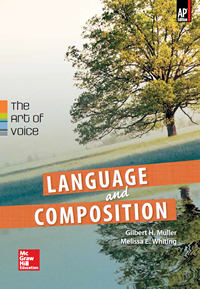
Language and Composition: The Art of Voice (Muller and Whiting)Chapter 6: Family Life and Gender Roles: How Do We Become Who We Are?Chapter OverviewAs you read the essays in this chapter, consider the following questions:
Every culture has its own ideas about what identity is, how it is formed, and where it comes from. What is the influence of family, of environment, of gender, and, as we saw in Chapter 5, of education on the creation of identity? Although it is challenging to reconcile these various cross-cultural ideas, the writers in this chapter attempt to make sense of identity from the perspectives of family and gender, and they invite readers to liberate themselves from the tyranny of stereotyping. Families nourish us during childhood, and the values our families seek to maintain usually affect our identities in powerful ways, whether we adopt them wholly, modify them, or reject them outright. Writers have always been aware of the importance of the family in human development and behavior, and have written about it from various perspectives, using narration, sociological and psychological analysis, and cultural criticism, among other approaches. Tolstoy wrote that “happy families are all alike; every unhappy family is unhappy in its own way.” But we shall discover that Tolstoy had a limited view of family life and its values—probably circumscribed by the mores of the time he lived in. Some of our finest essayists and observers of social life today demonstrate in this chapter that what constitutes the definition of a family is up for grabs as we begin the new millennium. The family is one of the few institutions that we find in every society throughout the world, at least every thriving society. Anthropologists, sociologists, and psychologists tell us that family patterns are exceedingly diverse even in the same societies. In the past and even more so today, children grow up in many ways: in nuclear and in nontraditional households; in single-parent and in dual-parent arrangements; in extended families and in blended families; and in patriarchal and matriarchal, heterosexual and homosexual, monogamous and polygamous situations. And the dynamics of family life assume added dimension as we move across cultures, studying European families, African American families, Hispanic families, Asian families, and so forth. Even within these groups, we find variables that affect family life and values, such as economic class, social class, and educational levels. Unlike in previous periods in our history, Americans today seem to be groping for a definition of what constitutes the happy family. With the influences of the media and of peer pressure on children, the rise in the number of latchkey children, and the fact that there is a growing diversity of cultures in America owing to the new wave of immigration, the family appears to be less of a traditional haven than it was even a generation ago. This chapter contains vivid accounts of the long-standing bonds within the family that have been treasured for their capacity to build values of love and sharing. It also contains essays that demonstrate how family life is filled with emotional complexities and conflicts that the child must negotiate as she or he finds meaning and attempts to construct an identity. Each writer, whether writing narration, exposition, or argumentation, shows how significant the family is for the development of our values, personalities, and lifestyles. As much as our identities are shaped by powerful institutional forces like the family, what we are might be even more powerfully determined by the forces of sexuality and gender. Freud asserted that human behavior is rooted in sexuality, that gender (rather than family or school or any social institution) is destiny. Clearly, notions of what it means to be a man or a woman have an impact on the construction of our identities. The identity issues discussed in this chapter might prove to be controversial, but they will encourage you to confront your sense of identity. These essays are like a mirror in which you can see and evaluate what you really are. |  |















